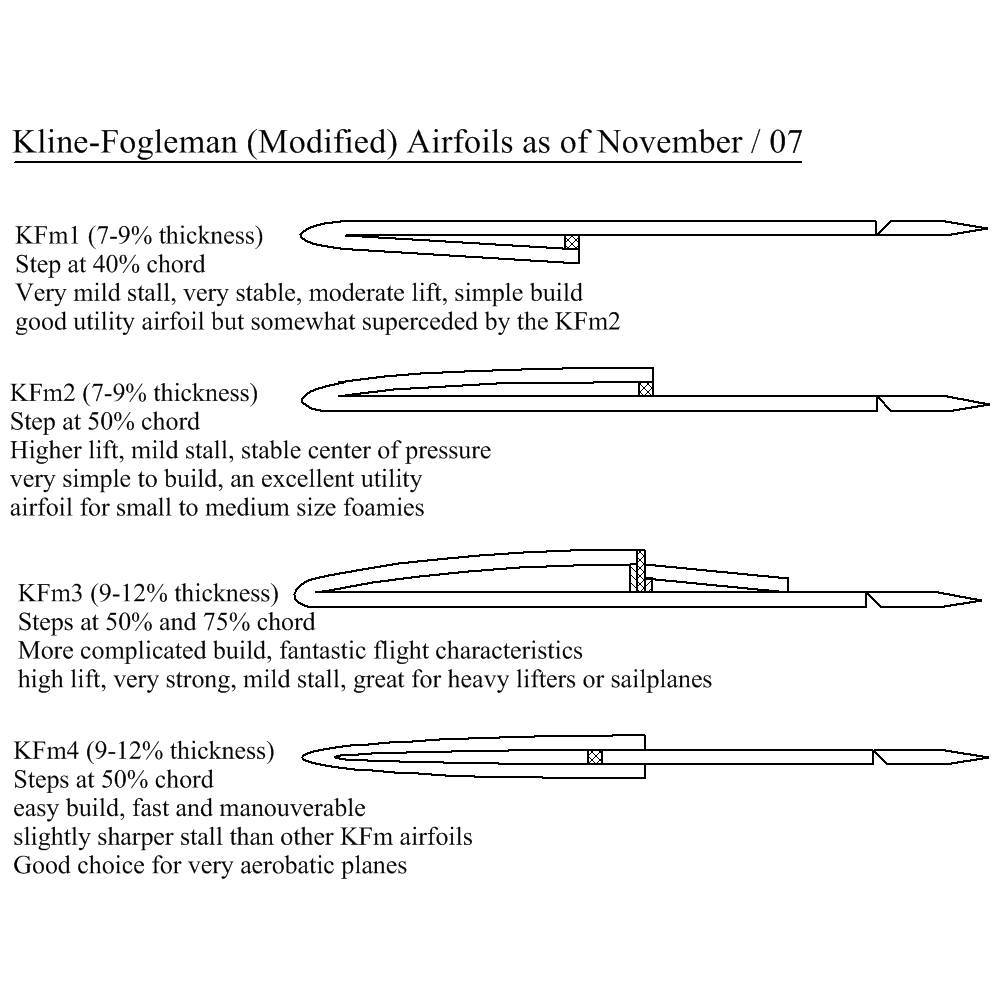Kline-Fogleman (KFm) airfoils, despite their seeming contradiction with known principles of aerodynamics, seem to be very popular in RC modelling, and are known to have a peculiar stall behavior, with a gradual transition to high drag without loss of lift, unlike the sharp stall of traditional smooth airfoils.
There's little information I could find about how the stepped design affects the airfoil's aerodynamic efficiency, however. The design seems to be plenty good for powered fun-flyer planes; I've seen at least some KFm slope gliders, too, and a well-circulated picture (provided below) states that the KFm3 variant has "fantastic flight characteristics" and is good for sailplanes... But there are no hard numbers that I could find on just how good these airfoils are (or how good they can be) in terms of lift to drag (L/D) ratio.
Are there any known numbers for the typical and best case L/D values of aircraft with Kline-Fogleman (KFm) airfoils, and if so, what are they? How does this characteristic differ between variants of the airfoil design?
